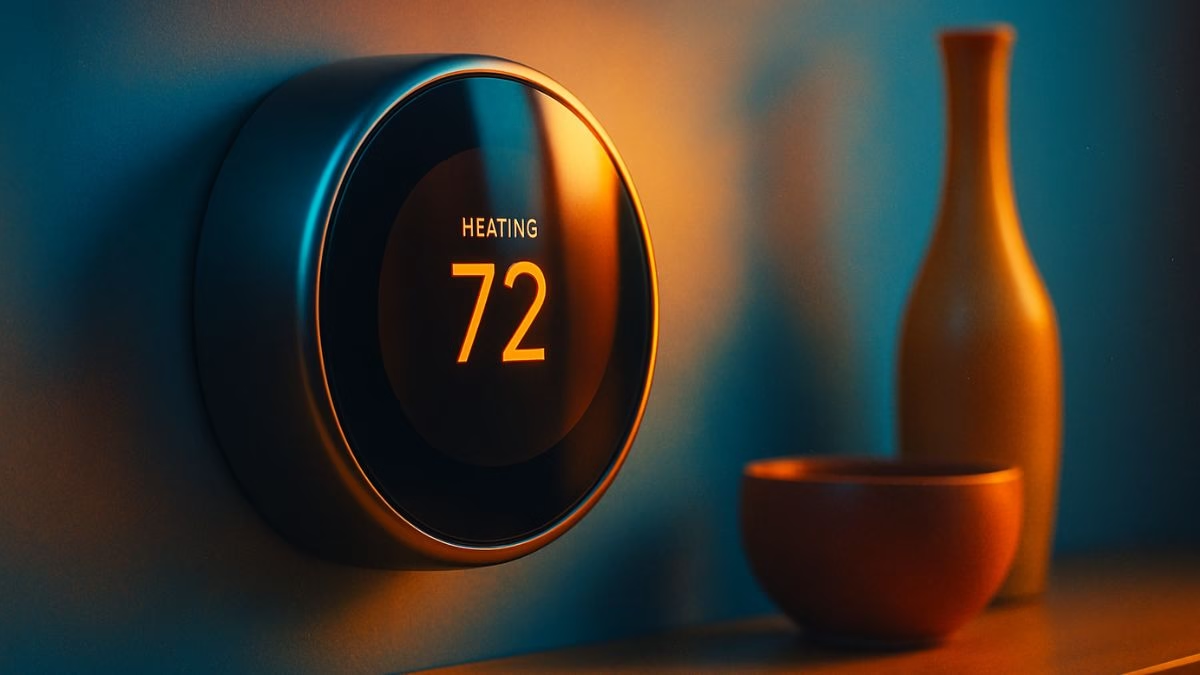How to Approach This Lesson
In this lesson, we’re stepping into the shoes of a copywriter. Our goal is to write a description for a product that is not just informative, but also persuasive. The best way to engage with this guide is to think like a potential customer. As we go through the steps of building the description, ask yourself: “Would this make me want to buy this product?” We’ll break down the process from a blank page to a polished, persuasive piece of writing that you can adapt for any product or service.
The Challenge and The Plan
Our task is to write a compelling product description for a fictional smart-home thermostat, let’s call it the “Aura Thermostat.” This isn’t just about listing features like “Wi-Fi enabled” or “digital screen.” Anyone can do that. Our challenge is to sell a feeling—the feeling of comfort, savings, and effortless control. We need to translate technical features into tangible benefits for the user.
Many English exams include tasks where you need to write persuasively, whether it’s a proposal, an advertisement, or a formal letter. This exercise hones exactly those skills.
Here’s our game plan:
- Identify the Target Audience & Their Pain Points: Who are we selling to? What problems do they have with their current heating and cooling?
- Translate Features into Benefits: We’ll list the thermostat’s features and then figure out why a customer would care about each one.
- Structure the Description: We’ll map out our description with a clear structure: a catchy headline, an engaging opening, a body explaining the benefits, and a strong call to action.
- Draft and Polish: We’ll write a first draft and then refine it with powerful verbs, sensory language, and a persuasive tone until it shines.
Ready to sell some thermostats? Let’s begin.
Step-by-Step Walkthrough: Crafting a Persuasive Description
Step 1: The Target Audience and Their Pain Points
Who buys a smart thermostat? Probably someone who is tech-savvy, environmentally conscious, and/or looking to save money.
What are their problems (pain points)?
- High energy bills.
- Forgetting to turn the heating off when they leave.
- Coming home to a freezing cold or boiling hot house.
- Clunky, ugly thermostats on their wall.
- Complicated programming and controls.
Our product description needs to solve these specific problems.
Step 2: From Features to Benefits
This is the most important step in persuasive writing. A feature is what a product is. A benefit is what the customer gets.
| Feature | Benefit (Why should I care?) |
| Learns your schedule | Effortless Comfort & Savings: It programs itself, so you don’t have to think about it. The house is always the perfect temperature when you’re there and saves energy when you’re not. |
| Mobile App Control | Total Control, Anywhere: Change the temperature from your bed, the office, or even the beach. No more coming home to a cold house. |
| Sleek, minimalist design | Modernizes Your Home: It’s not an ugly plastic box. It’s a stylish piece of tech that enhances your home’s decor. |
| Monthly energy reports | Empowers You to Save: See exactly how much you’re saving and get smart tips to save even more. Puts you in control of your bills. |
Now we have the core ingredients for our description.
Step 3: Structure the Description
A good product description follows a proven formula:
- Headline: Grab their attention. Focus on the main benefit.
- Opening Paragraph: Empathize with their pain points and introduce your product as the solution.
- Body (Bullet Points are great here): Detail the key benefits we identified. Use strong verbs.
- Closing Paragraph: Create a vision of the ideal future state (the “after” picture).
- Call to Action (CTA): Tell them what to do next.
Step 4: Draft and Polish
Let’s start drafting, keeping our structure in mind.
Bad Example (Just lists features):
The Aura Thermostat has Wi-Fi and can be controlled with an app. It has a learning algorithm and a sleek design. It also provides energy reports. Buy now.
This is boring and uninspired. It doesn’t connect with the customer’s needs at all.
First Draft (Applying our plan):
Headline: The Smarter Way to Live Comfortably.
Are you tired of high energy bills and coming home to a house that’s either too hot or too cold? The Aura Thermostat is the answer. It learns your life to keep you comfortable and save you money.
- It learns your schedule and programs itself.
- You can use the app to control it from anywhere.
- It has a sleek design that looks great.
- See how much you save with energy reports.
Aura makes your home smart.
Add to cart.
This is much better! It follows the structure and talks about benefits. But the language is a bit flat. We can make it more dynamic and persuasive. Let’s polish it with stronger verbs and more evocative language. We’ll aim for a tone that is sophisticated, but also warm and aspirational.
Final Polished Version:
Headline: Effortless Comfort is Here. Say Goodbye to Energy Waste.
Imagine a home that anticipates your needs. A home that welcomes you with the perfect temperature, every single time, without you ever touching a dial. Stop imagining. Meet the Aura Thermostat.
The Aura isn’t just smart; it’s intuitive. It’s the simple, elegant solution for anyone who believes comfort and efficiency shouldn’t be complicated.
- Learns Your Rhythm: Aura quickly learns your family’s schedule and programs itself to create a perfectly tailored environment, saving you up to 20% on your energy bills effortlessly.
- Control from Anywhere: Leaving work early? Adjust the temperature from our sleek mobile app and walk into pure comfort.
- Designed for Your Home: With its minimalist glass face and brushed metal trim, Aura is a beautiful upgrade that complements your modern lifestyle, not a piece of plastic that clashes with it.
- See Your Savings: Our clear, insightful monthly reports don’t just show you how much you’ve saved; they empower you with smart tips to save even more.
Stop coming home to a thermostat you have to fight with. It’s time to come home to Aura.
Add Aura to your cart and step into a smarter, more comfortable world today.
This version uses stronger headlines, asks engaging questions (“Imagine…”), uses powerful verbs (“anticipates,” “empowers”), and paints a clear picture of the benefits. The final Call to Action is also more inspiring.
Wrap-Up & Your Challenge
Key takeaways for writing persuasively:
- Focus on the Customer: Understand their problems and desires first.
- Translate Features into Benefits: Don’t just say what it does, explain what it does for them. “So what?” is the most important question to ask of any feature.
- Use a Clear Structure: Guide the reader with a headline, engaging intro, benefit-driven body, and a clear call to action.
- Polish Your Language: Use vivid verbs, sensory details, and an appropriate tone to make your writing come alive.
Your Optional Writing Challenge:
Ready for another go? Your challenge is to write a product description for one of the following:
- A high-tech, self-cleaning water bottle.
- A premium, weighted blanket designed to reduce anxiety.
Choose one and apply the steps we used today. Identify the target audience and their pain points, translate the features into compelling benefits, structure your description, and polish your language until it persuades. Remember, practice is the only way to make these skills second nature. Go for it!










0 Comments